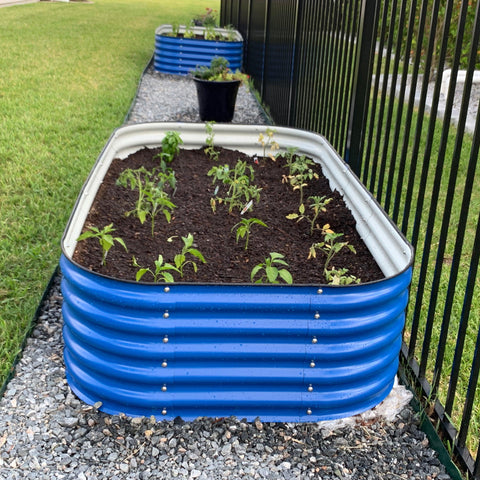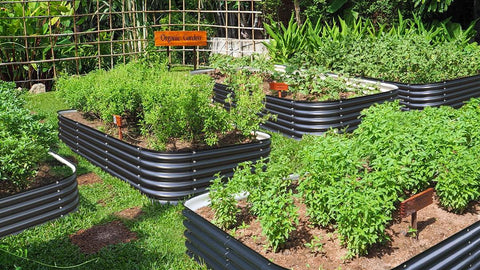Tip from Olle Garden beds:A Seasonal Guide for Optimal Planting and Maintenance
Gardening is a fun and fulfilling hobby that enables us to experience the rhythm of nature. Understanding the ideal periods for planting and care throughout the year is crucial for growing an abundant, healthy garden. We'll look at the finest techniques for each season in this thorough seasonal guide, assisting you in making a garden that thrives all year long. In this blog,We will describe how to Planting in the garden beds.
Spring: The Season of Renewal
Spring marks the beginning of the gardening season in many regions. It's a time of renewal, when nature awakens from its winter slumber. Here's what you should focus on during spring:
- Planting: Early spring is ideal for planting cold-hardy vegetables, such as lettuce, peas, and carrots. As the weather warms up, transition to planting tender annuals like tomatoes and peppers.
- Pruning: Prune overgrown shrubs and trees before they start budding. This is also the time to cut back perennials that have died back during winter.
- Weed Control: Stay vigilant against weeds, as they can quickly take over your garden. Early intervention will save you time and effort later in the season.
- Soil Preparation: Add compost or organic matter to your soil to improve its fertility and structure. Spring is an excellent time for soil testing to identify any nutrient deficiencies.

Summer: The Season of Growth
Summer is when your garden is in full swing, with plants growing vigorously. Here's how to make the most of this season:
- Watering: In hot and dry regions, water deeply and consistently. Mulch around plants to conserve moisture and deter weeds.
- Fertilizing: Apply slow-release fertilizers to keep your plants well-fed throughout the growing season.
- Pest and Disease Management: Regularly inspect your plants for signs of pests or diseases. Early detection and treatment are essential.
- Harvesting: Enjoy the fruits (and vegetables) of your labor! Harvest ripe produce regularly to encourage continuous production.
- Deadheading: Remove spent flowers to encourage continuous blooming in your garden.
Fall: The Season of Preparation
As summer gives way to fall, it's time to prepare your garden for the coming winter. Here's what to focus on:
- Planting: Fall is an excellent time for planting trees, shrubs, and perennial flowers. The cooler temperatures and ample moisture help new plants establish their root systems.
- Clean-Up: Remove dead or diseased plant material to prevent overwintering pests and diseases.
- Mulching: Apply a layer of mulch to protect plant roots from freezing temperatures and to keep weeds at bay.
- Composting: Continue adding organic matter to your garden beds to improve soil structure.
- Bulb Planting: Plant spring-flowering bulbs like tulips and daffodils in the fall for a burst of color in the coming spring.

Winter: The Season of Rest
While winter may seem like a time when your garden sleeps, there are still essential tasks to consider:
- Planning: Use the winter months to plan your garden for the upcoming year. Research new plants, review last year's successes and failures, and sketch out your garden layout.
- Tool Maintenance: Clean and sharpen your gardening tools, so they're ready for action in the spring.
- Indoor Gardening: If you have a green thumb and miss gardening during the winter, consider starting seeds indoors or maintaining houseplants.
Understanding the seasonal nuances is essential to having a successful garden because gardening is a year-round endeavor. You can have a lovely and fruitful garden that resembles the natural rhythms of nature by adhering to this seasonal pattern for planting and care. Enjoy your garden!
